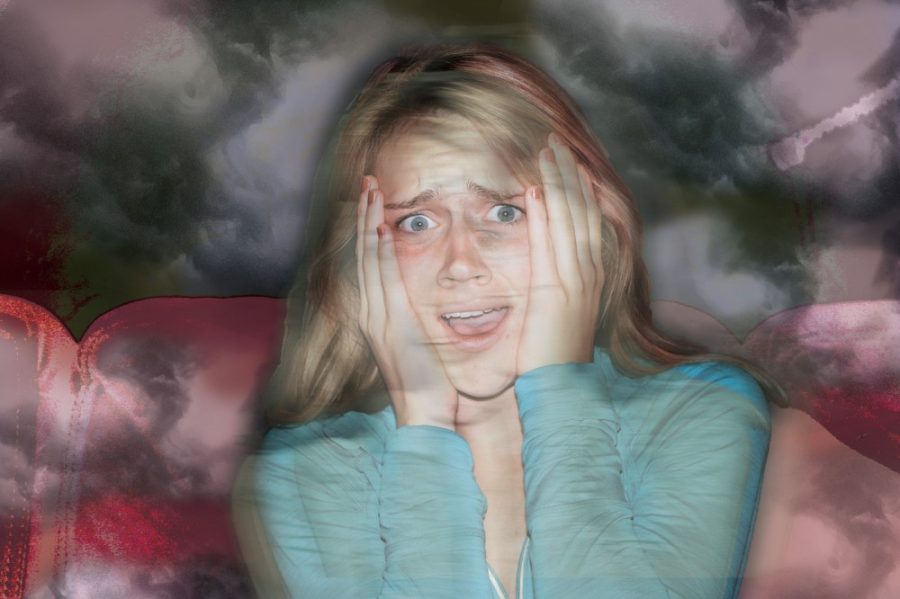Imagine this: you’re home alone at night when you hear a strange noise coming from upstairs, a tapping that sounds almost like footsteps. Suddenly, you are overcome with paranoia and your body tenses up, each muscle prepared to spring into action. Your heart beats faster and your hair stands on end. You’re scared, and your body knows it.
Fear is one of the most universal emotions humans experience, and because of that, its symptoms are widely known. But while the cause of fear may be easy to pinpoint — be it a chainsaw-wielding maniac or the impending doom of midterms — the way the body and mind react to a scare is a bit more complicated.
“The first thing that happens when someone is scared is an appraisal of the threat,” said Alfred Kaszniak, a professor in the UA department of psychology.
This appraisal is controlled by two structures in the brain: the amygdala, which has a direct connection to the senses, and the hypothalamus, which sends signals to the adrenal gland. The adrenal gland then releases hormones throughout the body, preparing it for one of two options: fighting the threat or fleeing from it.
This is called the fight-or-flight response, and it is our instinctual reaction to frightening or threatening situations.
“Physiologically, it has all kinds of different effects on your body,” said Katrina Mangin, a professor in the department of ecology and evolutionary biology at the UA. “Your heart races, your blood pressure goes up, different hormones are released, all to get you to be on really high alert for whatever is happening.”
During this fight-or-flight response, the brain becomes more focused and alert in order to identify the possible threat; muscles are energized, and the physiology of the gut changes as blood is moved out of the digestive system and into the surrounding muscles. This occurs as a way to divert energy away from unnecessary bodily functions and into places where it would be used effectively, says Kaszniak.
“In terms of evolution, it makes sense that there would be this response to a threat, where it is a trade-off,” said Mangin. “You put your resources into whatever you need to do to either fight or get away.”
During the fight-or-flight response, blood vessels in the skin also constrict, so that if you were to stay and fight the threat, you wouldn’t bleed as much during the brawl. This constriction of the blood vessels is also what causes your hair to stand on end when you’re scared, Kaszniak added.
This primal, instinctual reaction is what scientists call a low road response to fear, where the response is immediate and extreme, and the one experiencing fear doesn’t process the entire situation, causing them to make rash decisions.
The fight-or-flight response is a common reaction in those who visit the SlaughterHouse, a haunted house in Tucson that is open during the month of October for Halloween, said Bobby Sutton, managing partner at the SlaughterHouse.
“There is some very unnatural human phenomenon we experience when you scare someone and the fight-or-flight response kicks in,” Sutton said.
He described what he calls “happy feet,” which occur when someone is scared but has no place to run, causing them to rapidly stomp their feet on the ground as if they were running.
“We also have a lot of people that will swing because their fight mechanism comes out because there is nowhere to go,” Sutton said. “It’s very primal.”
But despite the fact that the body has such an extreme reaction to fear, people still seek out scares. Horror movies are highly popular, and haunted houses are bursting with people during the month of Halloween. The desire to be scared seems to contradict some of our most basic instincts.
The pursuit of scares may have to do with the other reaction the body has to fear, referred to as the high road response. This response to fear occurs after the initial scare, when the body is still prepared to flee or fight, but the brain is able to process more of the experience and appreciate the full context of the threat.
“When you’re at the movie theater, you are able to suspend your disbelief and immerse yourself and let yourself get scared,” says Kaszniak, “but there is an aspect of the processing that is aware what the context is.”
The release of endorphins also factors into the initial fear response. In case of a real threat, the endorphins help prepare the body for battle, but in a situation without any real danger, the endorphins create a natural high that makes the experience enjoyable and fun rather than frightening.
This response is a key ingredient for the SlaughterHouse.
“We are good at scaring people,” Sutton said. “If you can get a person’s mind to start scaring them, you’re set.”









